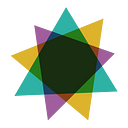Member-only story
Color in a Perceptual Uniform Way
Exploring the Hue Chroma Luminance (HCL) Color Space for Data Visualization
This writing discusses the Hue-Chroma-Luminance (HCL) color space that is tailored to how we see colors as humans. In my previous writings on colorizing data visualizations, I have focused on the Red Yellow Blue (RYB) and the Red Green Blue (RGB) color spaces. The RYB space has a long historical use by artists for mixing paints and dyes in creating visual compositions. The RGB space is based on the concept that Red, Green and Blue (RGB) are the color primaries for viewing displays like what we see on our desktop and mobile devices. Neither RYB nor RGB are perceptually uniform or specifically optimized for the human visual system.
A color space is perceptually uniform if a change of length in any direction X of the color space is perceived by a human as the same change. A non-uniform perceptual colormap can have stark contrasts when transitioning from one hue to another hue. In data visualization, these contrasts can be mistaken as changes in the data rather than as transitions in the color palette. I show the difference between a non-uniform and a uniform perceptual colormap below.

